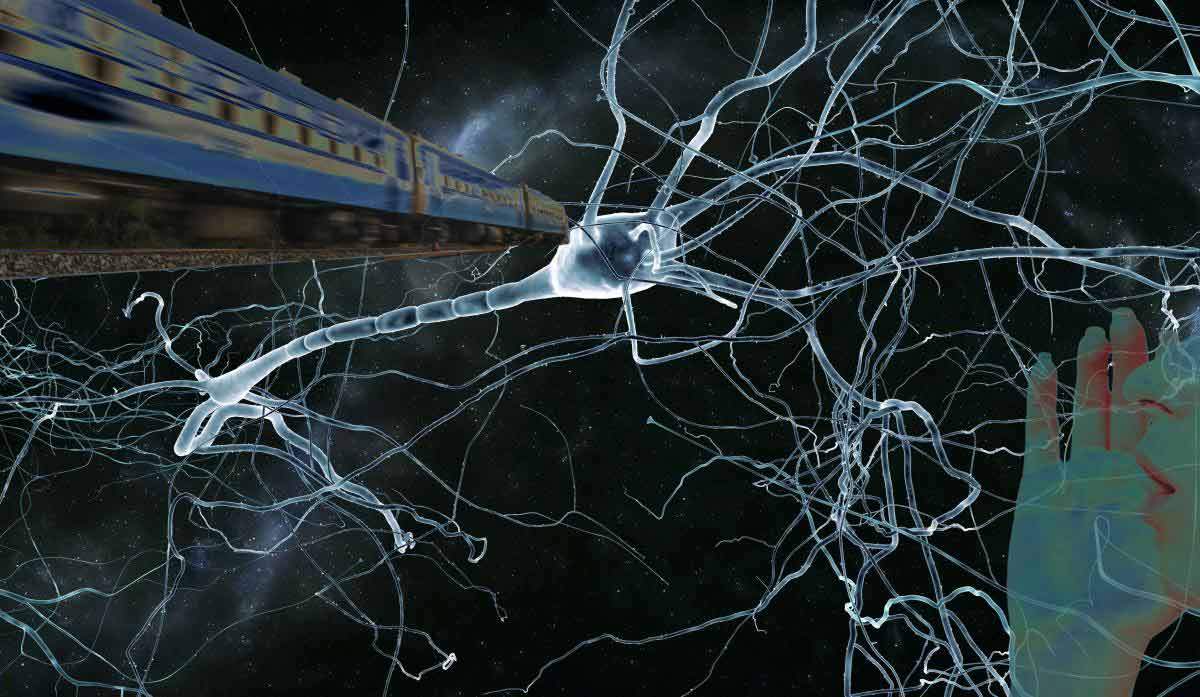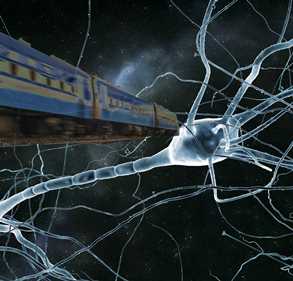The story of the boy who cried “wolf” is more than just a fairy tale. In the story, the more he cried out, the less attention the villagers paid to his cries. That phenomenon, we now know, reflects a deeper biological reality: The nervous system cannot sustain attention at high levels of stimulation. Our sensory systems contain mechanisms for adapting, so that a few seconds after entering a crowded room we can carry on a conversation; we barely pause in our reading when someone turns on a light; and we cease to feel the clothing on our bodies seconds after we get dressed.
Scientists think that this downward adjustment of the nerves’ responses helps them cope with the gap between the huge physical range of stimuli they must take in and their limited abilities when it comes to processing them. For example, a loud sound can be thousands of times the intensity of a weak one, whereas the nerve cells can vary the rate of their firing only on a scale of hundreds. By adapting to persistent environmental stimuli, the nerve cells are freed to function at their optimal activity range, both when responding to strong stimuli – such as the din of a train – or to much weaker inputs – say, a whisper.
This phenomenon has been demonstrated in the lab, with exposure to a stimulus that repeats periodically. After a short while, the nerve cells adapt and the signals they fire in response to the stimulus gradually diminish in strength.
Research in the lab of
Prof. Ilan Lampl of the Neurobiology Department, which recently appeared in the
Journal of Neuroscience, takes the subject of adaptation one step further. Dr. Keti Cohen-Kashi, a postdoctoral fellow in his group, asked what happens when one interrupts the regular periodicity of the stimulus, even by a little.
She designed an experiment in which the activity of nerve cells in a part of the rats’ brains – the cortex – was monitored as their whiskers were exposed to a periodic stimulus. The repeating stimulus was then stopped and, after a short rest, a single stimulus – identical to those in the previous series – was given again. As expected, the firing of the nerve cells steadily faded – some three- to four-fold – as the periodic stimulus continued. The researchers’ surprise was in the response to the “unexpected” stimulus that followed: About a third of the monitored cells responded with a bang – three times the intensity of their maximal response to the original stimulus.
Lampl explains that the single, sudden stimulus “breaks” the adaptation. This mechanism may arise from our survival instincts: Adaptation leaves the sensory systems free to pick up on the unfamiliar, sudden surprises in our surroundings while ignoring the familiar background stimuli.
Although the research was done on rats, Lampl says that the findings may explain the results of certain experiments done with human volunteers. In one experiment conducted in Italy, the subjects experienced the stimuli on a finger. Like the rats in Lampl’s lab, these subjects received an additional, surprise stimulus, but this one was in a slightly different frequency and was sometimes applied to the corresponding finger of the other hand. The volunteers were then asked to guess whether the additional stimulus was identical to the previous set. It turns out that their answers were more accurate if the second stimulus was given on the same hand. The new study suggests that this is because some of the nerve cells in the brain that are connected to this hand may have had a stronger response to the second stimulus.
How is adaptation broken? To further understand the phenomenon, the scientists used a special recording method that enabled them to distinguish between two types of signal sent between cortical cells – one that excites a response and one that inhibits it. They found that it is actually the inhibitory signals that are responsible for the increased strength of the response the second time around. While the signals that excite the response have had a chance to return to their former levels over the rest period, the inhibitory signals, which have also dropped in magnitude with the repeated stimulus, are still only at partial strength. So it was the absence of inhibition that caused a stronger signal in some of the nerve cells.
Parallel paths
In an additional study in Lampl’s lab, which appeared in the
Journal of Neuroscience, he and his team uncovered some clues to a long-standing question: If adaptation involves a drop in the nerves’ response to a periodic stimulus, how does the brain distinguish between signals that lessen in intensity due to internal adaptation and those that lessen because the signal from the external stimulus falls off (for example a receding train whistle)?
Research student Boaz Mohar used a new technique to insert electrodes deep into the brain – in the rats’ brainstem – to measure the electrical activity of a group of cells involved in the first stage of processing information from the whisker. These experiments showed that when the intensity of the stimulus is higher, the corresponding adaptation is slower and weaker. But then Mohar discovered a second group of cells responding to the stimuli. Surprisingly, in these cells, higher stimulus was tied to stronger and faster adaptation.
Each group of cells represents the starting point of a different information-processing pathway, both of them leading to the higher levels of the brain, in the cortex. The existence of two, parallel paths for transferring sensory information may help the brain decide, by monitoring how fast the nerves’ responses fade, which of the two kinds of stimulus – adapation or ebbing – is being experienced.
According to Lampl, the mechanism of the first group of cells goes against conventional thinking. It has been supposed that at higher intensities the response of the nerve cells should fall off faster, as they would deplete their reserves more quickly; but the research findings show that this is not always the case. In his present research, Lampl is looking to see if the explanation might lie in interactions between the two pathways, as well as investigating how these pathways are involved in processing more complex, natural stimuli.
Prof. Ilan Lampl's research is supported by the Henry Chanoch Krenter Institute for Biomedical Imaging and Genomics; the Marianne Manoville Beck Laboratory for Research in Neurobiology in Honor of her Parents; the Jeanne and Joseph Nissim Foundation for Life Sciences Research; the Adelis Foundation; the estate of Dorothy Geller; and the estate of Florence and Charles Cuevas.


